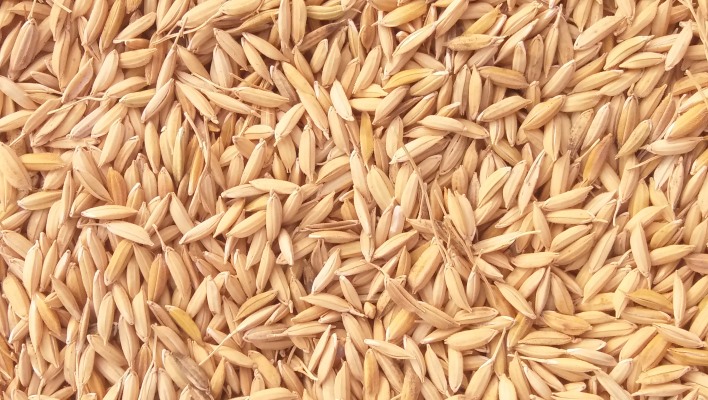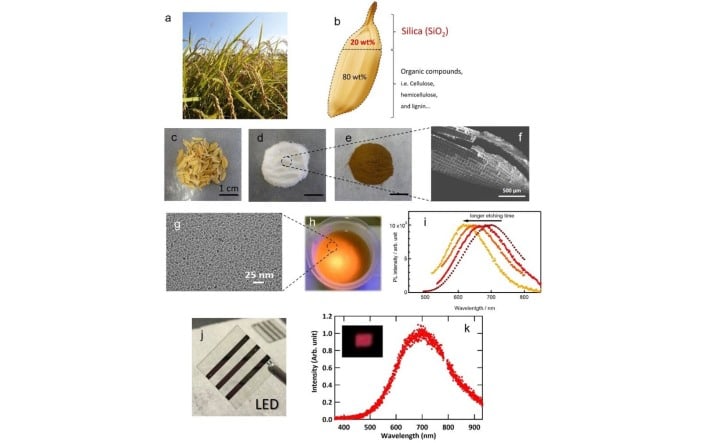Researchers Develop Method To Make Quantum Dot LEDs From Recycled Rice Husks

Scientists in Japan are taking a chisel to this problem by tackling another problem: the use of toxic heavy metals in the fabrication of LCD screens. You see, the production of modern liquid-crystal displays using quantum dots requires the presence of materials like cadmium, lead, and other heavy metals.
These can be toxic to humans and other life, so in a bit of genius not unlike making synapses from honey, the researchers from the Natural Science Center for Basic Research and Development at Hiroshima University have put two and two together to come up with a way to fabricate quantum dots using recycled rice husks.
A collection of figures demonstrating the source, intermediate steps, and final result. Source: Hiroshima University
The husks are rich in silicon and silicon oxide. After processing them using multi-stage heat treatment, the researchers used chemical etching and organic solvent to distill the husks down a liquid saturated with 3nm crystalline particles of silicate material, or ... quantum dots.
Testing the dots revealed that they are capable of producing tones in the orange-red zone, depending on the length of the etching time, but the researchers aren't satisfied with the efficiency of the end product yet, so more refinement of the process is needed. The team also says that it wants to explore other silicon-rich agri-waste, like sugarcane, wheat, or barley, as these may produce quantum dots with different characteristics.
Rice husks image by Tulsi Bhagat.


